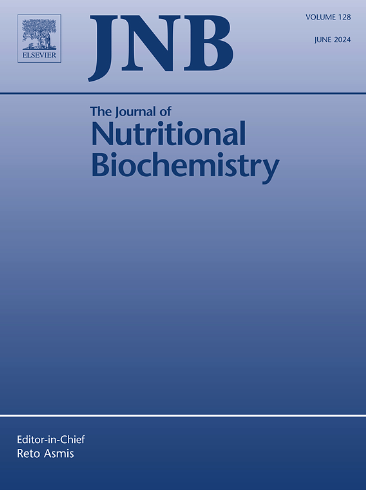褪黑素在硝酸甘油诱发大鼠偏头痛样痛觉减退中的受体介导机制。
IF 4.8
2区 医学
Q1 BIOCHEMISTRY & MOLECULAR BIOLOGY
引用次数: 0
摘要
褪黑素对偏头痛有治疗作用,但其抗偏头痛作用的机制尚未阐明。因此,本研究首次探讨了褪黑素在硝酸甘油(NTG)诱导的大鼠偏头痛样痛觉亢进条件下受体介导的作用机制。对NTG诱导的偏头痛大鼠和体内外脑膜制剂单独或以不同的组合给药褪黑素、非选择性MT1/MT2拮抗剂吕吲哚、选择性MT2拮抗剂DH97或强效MT3拮抗剂哌唑嗪。用冯-弗雷试验评估了基础和药物治疗后的疼痛行为。用酶联免疫吸附法测定三叉神经节、三叉神经尾核(TNC)和体外超融合培养基中的 CGRP 水平以及 TNC 中的 c-fos 水平。用甲苯胺蓝对脑膜肥大细胞进行染色,并对其活化和数量进行组织学检查。褪黑素减轻了机械性痛觉减退、TNC中的c-fos和CGRP表达、三叉神经节中的CGRP表达、脑膜传入的CGRP释放(所有这些都是由NTG诱导的),还抑制了NTG刺激的脑膜肥大细胞活化。褪黑素的作用分别在卢吲哚和 DH97 的存在下被取消。然而,除了机械性痛觉减退外,哌唑嗪并不能逆转褪黑激素的作用。Luzindole和DH97与哌唑嗪联用也分别消除了褪黑激素的作用,但不包括TNC中CGRP的表达。在实验性偏头痛样条件下,褪黑素通过调节三叉神经表达和脑膜释放 CGRP 以及脑膜肥大细胞活化发挥抗过敏作用。褪黑素的作用主要由MT2受体介导,但不排除MT1受体可能发挥的作用。本文章由计算机程序翻译,如有差异,请以英文原文为准。
Proposed receptor-mediated mechanisms of melatonin in nitroglycerin-induced migraine-like hyperalgesic conditions in rats
Melatonin has a therapeutic effect on migraine, but the mechanisms underlying its antimigraine effect have not been elucidated. This study therefore investigated for the first time the receptor-mediated mechanisms of action of melatonin in nitroglycerin (NTG)- induced migraine-like hyperalgesic conditions in rats. Melatonin, nonselective MT1/MT2 antagonist luzindole, selective MT2 antagonist DH97 or potent MT3 antagonist prazosin, alone or in various combinations, were administered to NTG-induced migraine rats and ex-vivo meningeal preparations. Basal and drug-treated pain behaviors were assessed with the von-Frey test. CGRP levels in the trigeminal ganglia, trigeminal nucleus caudalis (TNC) and ex-vivo superfusate medium, as well as c-fos level in the TNC, were measured by ELISA. Meningeal mast cells were stained with toluidine-blue and examined histologically for their activation and count. Melatonin mitigated mechanical hyperalgesia, and c-fos and CGRP expression in the TNC, CGRP expression in trigeminal ganglia, CGRP release from meningeal afferents, all of which were induced by NTG, and also suppressed NTG-stimulated meningeal mast cell activation. The effects of melatonin were abolished in the presence of luzindole and DH97, respectively. However, prazosin did not reverse the effects of melatonin except for mechanical hyperalgesia. Luzindole and DH97 in combinations with prazosin also canceled the effects of melatonin, respectively, other than CGRP expression in the TNC. Melatonin exerts its anti-hyperalgesic effects through modulation of trigeminal expression and meningeal release of CGRP, and meningeal mast cell activation in experimental migraine-like conditions. The effects of melatonin are mainly mediated by MT2 receptors, without excluding a possible role for MT1.
求助全文
通过发布文献求助,成功后即可免费获取论文全文。
去求助
来源期刊

Journal of Nutritional Biochemistry
医学-生化与分子生物学
CiteScore
9.50
自引率
3.60%
发文量
237
审稿时长
68 days
期刊介绍:
Devoted to advancements in nutritional sciences, The Journal of Nutritional Biochemistry presents experimental nutrition research as it relates to: biochemistry, molecular biology, toxicology, or physiology.
Rigorous reviews by an international editorial board of distinguished scientists ensure publication of the most current and key research being conducted in nutrition at the cellular, animal and human level. In addition to its monthly features of critical reviews and research articles, The Journal of Nutritional Biochemistry also periodically publishes emerging issues, experimental methods, and other types of articles.
 求助内容:
求助内容: 应助结果提醒方式:
应助结果提醒方式:


